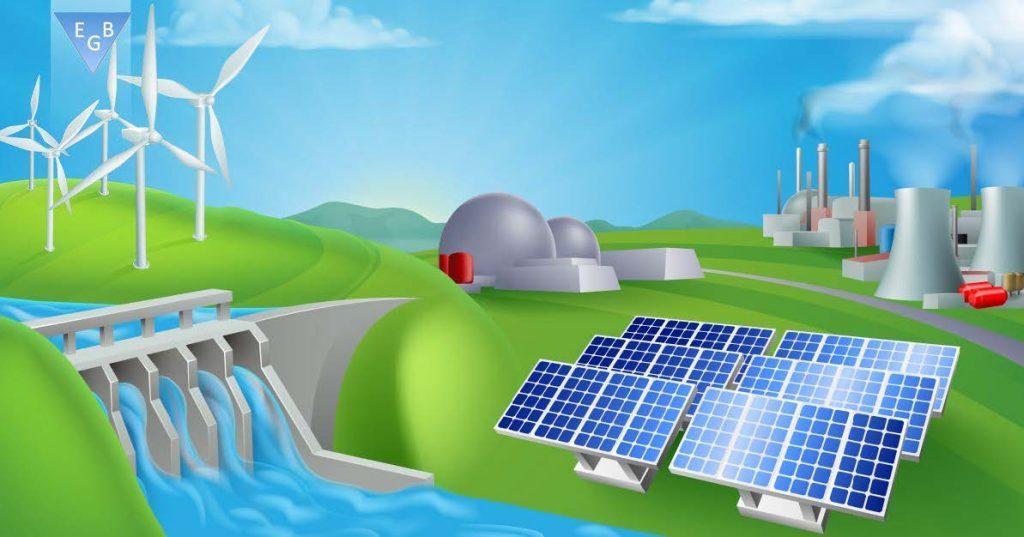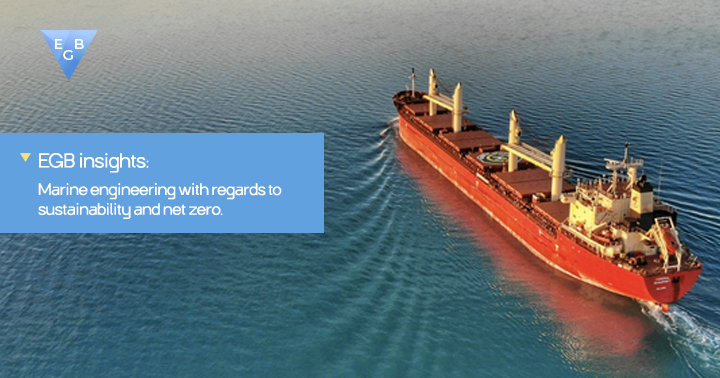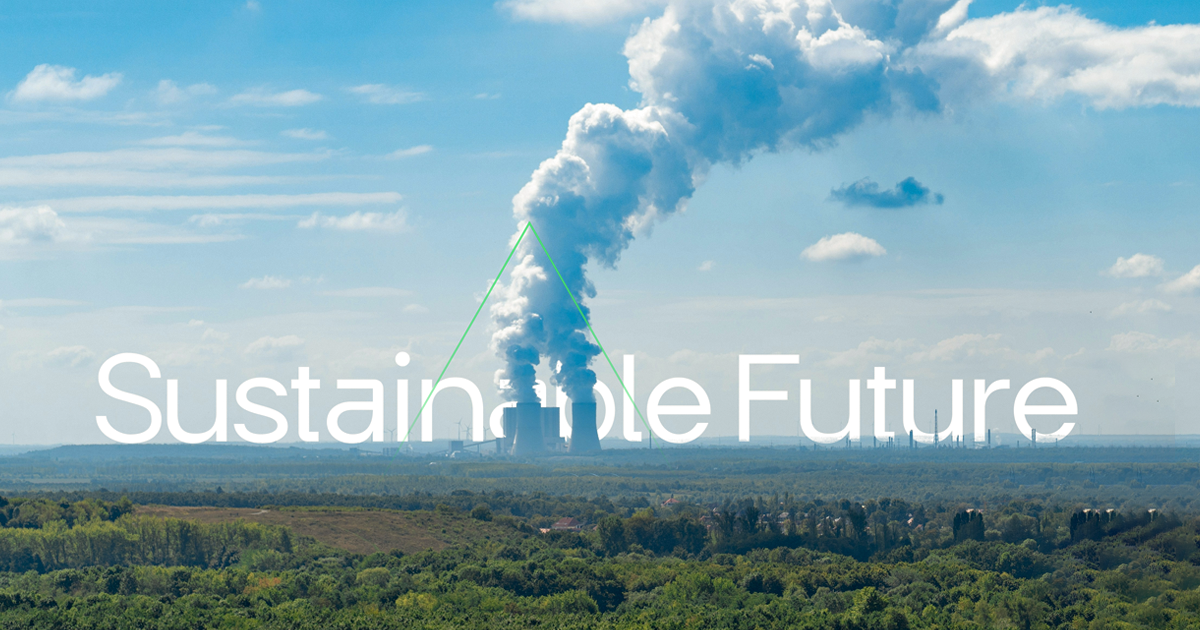
How Can We Determine The Right Energy Mix For A Country?
THE IMPORTANCE OF APPROPRIATE POLICY MIXES
Transitioning away from current energy mixes, which includes power generation using fossil fuels, faces several hurdles such as resistance to change from incumbent industries, high implementation costs and lack of investments in most countries around the world. These hurdles require strategic policies to overcome them in order to nurture rapid transitions to low-carbon technologies. Understanding how the conceptualisation of policy strategies are supported by the interaction of the policy instruments is important in critiquing whether a power generation strategy to support the right kind of low-carbon mix will lead to a quick and sustainable transition. It is also very important to acknowledge that world events influence the social and political narrative, and ultimately affect the choice of energy mixes. Post the 2015 Paris agreement on climate change, and with a final call to save the world from ‘climate catastrophe’ during the recent Intergovernmental Panel on Climate Change (IPCC) meeting in South Korea, climate change policies are no longer about raising awareness. They are about rapidly shaping sustainable transition to low-carbon technologies, whilst driving the technological revolution required for negative CO2 emission, which is critical to both 1.5 and 2 degrees Celsius pathways.
In recent years, a broader set of policy mixes have emerged which enable the interaction of policy instruments, their respective policy strategies and associated short, medium and long term targets. In all cases, what is important about the policy mixes are their characteristics such as consistency in approach, coherence in the strategic definition and process, and credibility in its execution and of those responsible for its delivery. An example of such combination of instruments to form a policy mix can be seen in the German electricity market and its transition towards renewable energies. It is largely based upon a policy design called Energiewende, which includes Feed-in Tariffs (FiTs) and priority grid access, combined with long-term expansion milestones and the EU Emissions Trade System (EU ETS). At the same time, another policy mix to complement the renewable energies mix is the phase out of nuclear in parallel with the promotion of research and development of solutions to the climate change challenge, with the aim of disrupting incumbent non-renewable technologies. These instruments in Energiewende are core in the strategy (i.e. FiTs) to promote renewable energy and carbon pricing under the EU ETS to reduce Green House Gas (GHG) emissions. The entire approach is consistent in its design and coherent in the process. It demonstrates that the objectives associated with achieving the ambitious low-carbon energy transitions are embedded in the policy mix. The question is how effective is Energiewende in reducing GHG emissions when nuclear power generation is being disrupted?
EVALUATING OPTIONS FOR FUTURE ENERGY MIX AS A PRE-REQUISITE TO POLICY DESIGN.
Germany’s current policy on nuclear came directly after the Fukushima nuclear accident in March 2011, with a decision reached to phase out nuclear by 2022.
https://orthoinstitute.com/kamagra-online/
Until March 2011, one-quarter of electricity in Germany was generated from nuclear energy using 17 reactors1. The total is now 12% from just 7 reactors and 42% from coal, of which the majority of that is from lignite1. According to the World Nuclear Association, the high contribution of coal-fired plants to Germany’s energy mix makes the country the largest emitter of CO2 in Europe1. While some reports have argued that Germany and the EU as a whole, have created renewable energy policies to accelerate the roll-out of renewable energy technologies, resulting in disequilibrium in the power markets, and at an increased cost to the end consumer, it is widely acknowledged that the renewable energy policy mixes have been objective in their approach. They have also delivered the desired outcome as evident in Figure 1, with renewables accounting for 33% of the power production (TWh) as of 20172. However in the case of Germany, the questions are whether these renewable energy policy mixes are sustainable in terms of the prices being paid by the end consumer, and whether renewable energy technologies are able to fill the gap vacated by nuclear?
In the period of 2010 – 2017, nuclear power generation had fallen by 50% in Germany. In that same period, generation from hard coal had dropped by approximately 22% with negligible increases observed for lignite and natural gas. However, generation from renewables had increased by over 200% (approximately 210%). Based on this, it is clear that the events of Fukushima heavily influenced the policy decision to phase out nuclear and perhaps, it can be argued that this was an immediate priority at the time. Nuclear is key to reducing the reliance on generation from fossil fuels, particularly because renewables such as wind and solar photovoltaic (PV) have lower capacity factors (20% and 11% respectively for Germany as at 20151) in comparison with nuclear (97% as at 2015 in Germany1). Germany as a case study is one that is always used to show the polarising effect of power generation policies. In view of the urgency with regard to climate change, countries should objectively evaluate the negative impacts on each energy mix scenario. The key aim is to focus on drastically reducing GHG emissions in a safe and sustainable manner.
Figure 1 – Power Production in Germany 1990 – 20172
Source: Clean Energy Wire
Following the Fukushima accident, Japan shut down all nuclear power stations, whilst exploring a zero nuclear generation mix. At the same time, they increased LNG and fossil fuel imports for thermal plant generation as well as accelerating the implementation of wind and solar PV through favourable policies such as FiTs. Meanwhile, the Japanese Ministry of Economy, Trade and Industry (METI) had estimated that the yearly generation costs would increase by $37 billion if nuclear power plants were replaced with thermal plants3. Several assessments had concluded that an energy mix without nuclear generation would be the worst option to pursue, partly because of the increase in GHG emissions but more importantly because of the costs. Japan’s approach to the Fukushima accident is starkly contrasting to Germany’s. Japan adopted a short-term zero nuclear generation policy mix, with increases in fossil fired plant generation, as well as the acceleration of renewables through FiTs, whilst safety reviews were being conducted on existing nuclear power plants. As at 2016, nuclear power generation was 2% as reactors were restarted following successful safety reviews; the figure in 2010 was 26%4. The long-term plan unveiled by METI (2030) is for nuclear power generation to represent 20-22% of total generation and for renewables to represent 22-24% (10% in 2010)4.
It is unclear if any detailed evaluations or assessments were undertaken in Germany to assess the impact of phasing out nuclear, and how that influenced the power generation policy moving forward, but more importantly the effectiveness of future non-nuclear energy mixes to meet the ambitious emission reduction targets. The fact that renewables were accelerated would imply that the policy objectives were geared around reducing GHG emissions, but the effectiveness would be minimised by the rapid reduction of nuclear power generation. In the case of Japan, shutting down of nuclear power plants were justified following the accident. All measures that were taken to maintain power supply were necessary as part of the containment plan. It is clear that the energy policies in Japan following the accident were heavily based on detailed assessments using tools such as Multi-Criteria Decision-Making Analysis (MCDMA), with a focus on cost and climate change. However, it has to be stated that not enough has been done to focus on reducing GHG emissions. As at 2010, fossil fuel contribution to Japan’s power generation was 64%. Following the accident, the contribution increased to 84%. The long-term plan post 2030 is 56%, which in consideration of climate change is not sufficient. The 2030 plan is illustrated in Figure 2.
Source: METI
Figure 2 – Planned Power Production Mix in Japan (2030)5
POLICY MIXES TO SUPPORT INNOVATION AND DISRUPTION
A lot of the current work on policies to nurture transitioning is based on promoting innovation in low-carbon technologies, implementation of renewable energy, and energy efficient systems including economic instruments such as carbon trading, taxing and imports. As effective as these are, the approach is limited because there are only little aspects to it that include the disincentivisation of GHG emitting technologies. The aim is to create in tandem, new energy innovations whilst destroying incumbent systems, and in the process accelerate the development process of the new energy systems. Several experts have highlighted the case of Germany as one that supports innovation and disruption. On one hand, the Energiewende policy encourages industry to drive towards renewable energies; on the other, the destabilisation policies focus on phasing out nuclear power. The idea is that a disruption in one industry results in innovation at a rapid rate, thereby enabling faster deployment of solutions and reducing the cost. In the case of Germany, it has drawn criticism especially because of its insistence on using lignite, which counteracts the benefits brought about by renewables. A perfect scenario in Germany would be if generation from fossil fuels were disrupted instead of nuclear.
When considering the impact of accelerated innovation and the downstream effects in terms of cost reduction and maturity, a perfect example is solar PV technology. The solar PV modules represent over 50% of the cost and big reductions in prices have been observed due to improved manufacturing techniques, and the level of competition from the Asian manufacturers (the modules are currently averaging $0.37/Watt6). It has resulted in the construction of policies, supporting frameworks and investment incentives to support the development and construction of large-scale utility-based solar PV plants in African countries such as Senegal, Ghana and Uganda, which benefit substantially from higher levels of solar irradiance. This has encouraged other countries in the continent to follow suit by adopting similar policies and frameworks to embrace such developments, especially as the costs of solar PV plants are falling.
One limitation in the design of innovative policies is policy makers lack the insight to understand new technological advancements and their potential effects. As a result, tools such as MCDMAs are limited in their approach in assessing the impacts of unproven technologies. This is because assessment criteria such as Levelised Cost of Electricity (LCOE) and safety, are based on O&M experiences. Unproven technologies require a set of new criteria that provide information at the latter development and validation stages to benefit the policy design. If the policy makers know what new technologies are in the pipeline, and have a quantitative view of its benefits, then policies can be geared towards supporting the technological growth, which can go hand in hand with the maturity of the policy design. By aligning the policy instruments with the technological progress at the latter development phases, policy makers become better equipped to initiate a disruption in a timely manner.
A good example is in the case of Generation IV nuclear power plants. The next generation of nuclear power plants are defined by four technology goals7:
- Sustainable energy to meet clean air objectives, provide long-term availability, effective fuel utilisation, minimisation and management of waste thereby improving protection of public health and the environment.
- Economics with clear life-cycle cost advantages over other energy sources and a level of financial risk that is comparable with other energy sources.
- Safe and reliable operation using enhanced safety measures and maintainability to improve accident management, consequence minimisation and protection of investment and improved off-site emergency response. This is achieved through the increased inherent safety features of high integrity systems that are passive in operations,
which will enhance public confidence in the safety of nuclear.
- Proliferation resistance to increase the assurance protection is in place to prevent the diversion or theft of nuclear material.
A country that is considering clean and renewable energy without generation from fossil fuels may consider complementing the energy mix with nuclear plants using one of the Generation IV concepts. This is because of its economic potential. However, there will be concerns about the financial and technological risks associated with nuclear and the newer technology, and how safety concerns are being addressed. A policy design approach in support of innovation and rapid technological readiness would be to focus on the goals to be delivered by the technology and drive the policy instrument to accelerate the development of the technology through these goals. Several demonstration projects are currently running in an international collaborative effort to deploy the technologies between 2020 and 2030. Aligning policy instruments and defining a policy mix which is focused on sustainability, economics, safety and security would complement the rate at which deliverables can be met but more importantly can result in the disruption of generation from fossil fuels.
EMPHASIS ON MEETING THE 1.5 DEGREES CELSIUS TARGET
The recent IPCC meeting in October 2018 had outlined that global emissions of CO2 need to decline by 45% from 2010 levels by 2030, with global emission needing to be zero by 20508. These targets require a shift away from fossil fuels
with coal being phased out in line with the introduction of negative carbon technologies. Policies that reflect a higher price on emissions are needed in forecasts to achieve a cost-effective pathway but ultimately investments to limit warming to 1.5 degrees Celsius would need to double in the next 20 years with focus on renewable technologies and clean low-carbon technologies, whilst substantially decreasing investment in fossil-based technologies8. This will require the right policy instruments within the leading nations to bring about the socioeconomic changes that are desperately needed.
ABOUT EGB ENGINEERING
EGB Engineering is a UK based company with expertise in the field of power and propulsion. We provide quality engineering products and services to clients and operate in the aerospace, defence, energy and nuclear industries. To find out more, please click here.
REFERENCES
- Nuclear Power in Germany (updated in May 2018), http://www.worldnuclear.org/information-library/country-profiles/countries-gn/germany.aspx (website visited 19th October 2018).
- Germany’s energy Consumption and power mix in charts https://www.cleanenergywire.org/factsheets/germanys-energyconsumption-and-power-mix-charts (website visited 19th October 2018).
- Nuclear Power in Japan (updated in September 2018), http://www.world-nuclear.org/information-library/countryprofiles/
countries-g-n/japan-nuclear-power.aspx (website visited 19th October 2018).
- Agency for Natural Resources and Energies (2018) Japan’s Strategic Energy Plan, https://www.numo.or.jp/topics/1-1Nakanishi.pdf (website visited 19th October 2018).
- METI (2017) Japan’s Energy White Paper 2017, http://www.enecho.meti.go.jp/en/category/whitepaper/pdf/whitepaper
_2017.pdf (website visited 19th October 2018).
- The path to US$0.015/kWh solar power, and lower https://www.pvmagazine.com/2018/05/25/the-path-to-us0-015-kwh-solar-power-andlower/ (website visited 19th October 2018).
- Generation IV Goals https://www.gen-4.org/gif/jcms/c_9502/generation-iv-goals (website visited 19th October
2018).
- IPCC (2018) Global Warming of 1.5 degrees Celsius,http://www.ipcc.ch/report/sr15/ (website visited 19th October 2018)




